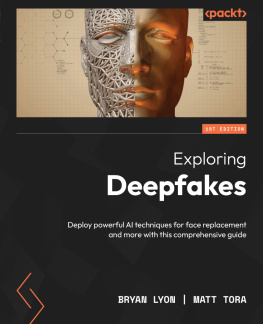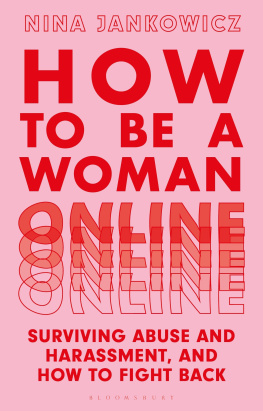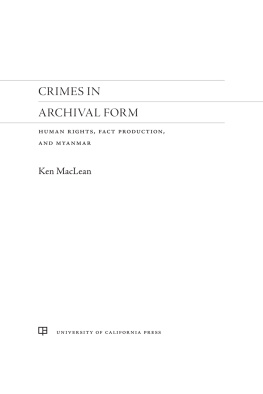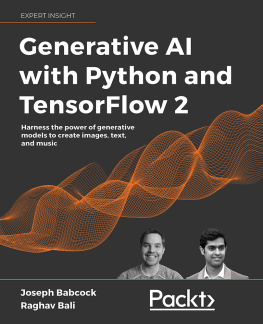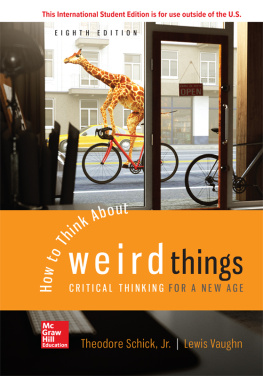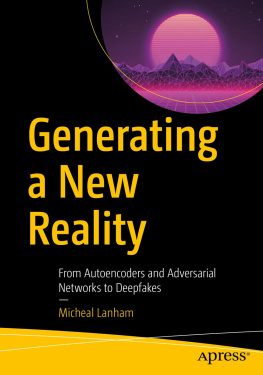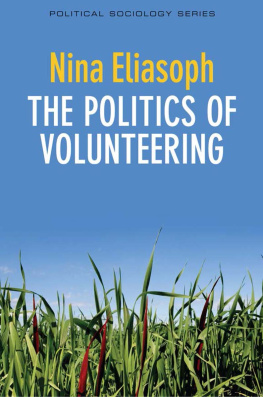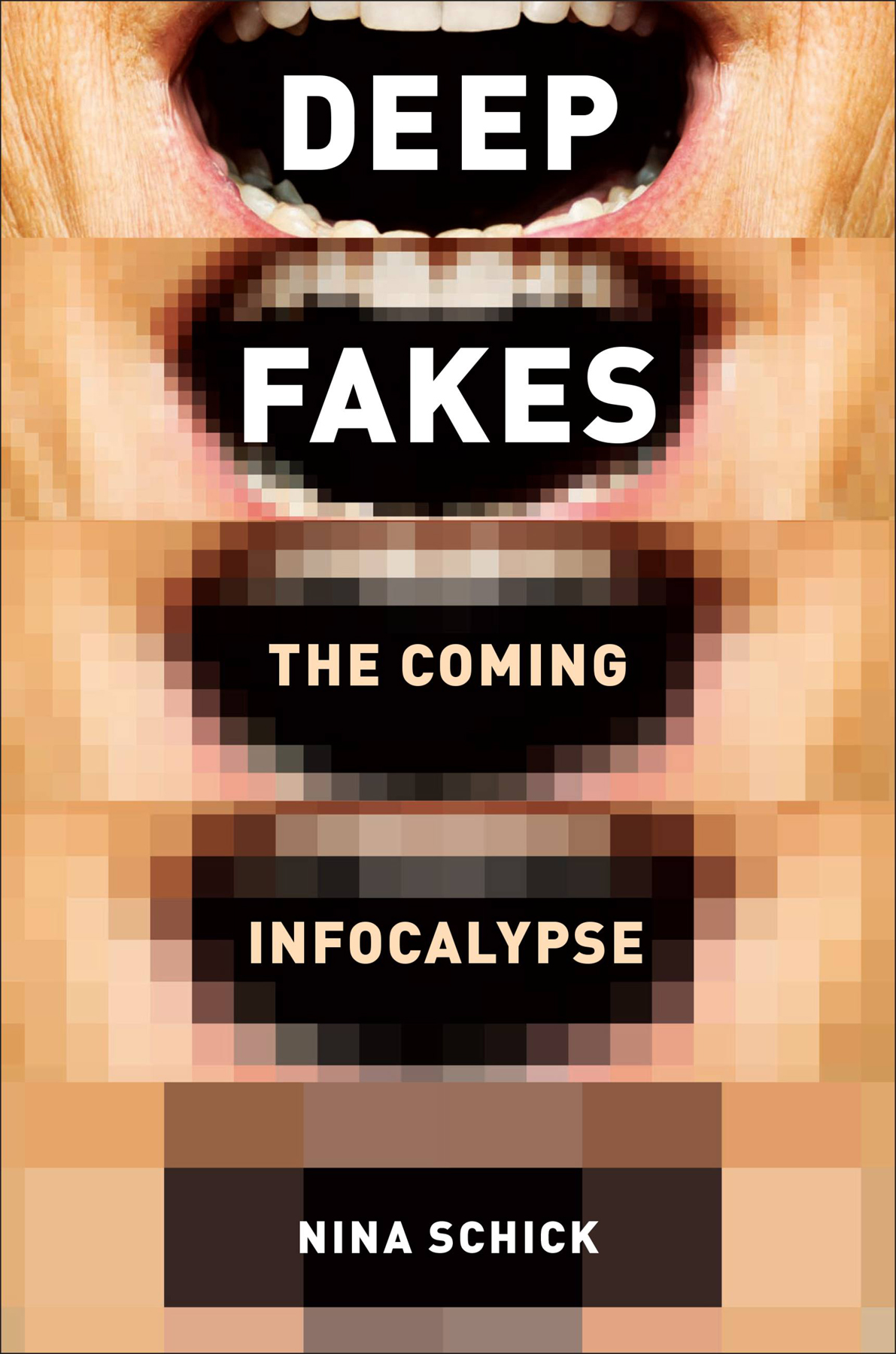Nina has advised a group of global leaders including Joe Biden and Anders Fogh Rasmussen (the former Secretary General of NATO), through her research on next-generation disinformation and AI-generated deepfakes. Half German and half Nepalese, she speaks seven languages and holds degrees from Cambridge University and University College London. She divides her time between London, Berlin and Kathmandu.
T here is a viral video of President Obama on YouTube, with almost 7.5 million views. The title lures you in: You Wont Believe What Obama Says In This Video! Obama looks straight into the camera. Seated in a deep mahogany chair, he appears to be in the Oval Office. Hes agedyou can tell from his salt-and-pepper hair. But he looks confident, relaxed. Over his right shoulder, you catch a glimpse of the American flag. As usual, Obama is dressed impeccably: a crisp white shirt and a blue tie. On his left lapel, hes sporting a U.S.-flag pin. You click play. Were entering an era in which our enemies can make it look like anyone is saying anything in any point in time, Obama begins. Even if they would never say those things. So, for instance he continues, gesturing with his hands, they could have me say things like President Trump is a total and complete dipshit! His eyes seem to glimmer with a hint of a smile. Obama continues, Now, you see, I would never say these things, at least not in a public address.
Obama never did say those things. The video was fakea so-called deepfake, created with the help of Artificial Intelligence (AI). Welcome to the future, one in which AI is getting powerful enough to make people say things they never said and do things they never did. Anyone can be targeted, and everyone can deny everything. In our broken information ecosystemcharacterized by misinformation and disinformationAI and deepfakes are the latest evolving threat.
WHAT IS A DEEPFAKE?
A deepfake is a type of synthetic media, meaning media (including images, audio and video) that is either manipulated or wholly generated by AI. Technology has consistently made the manipulation of media easier and more accessible (through tools like Photoshop and Instagram filters, for example). But recent advances in AI are going to take it further still, by giving machines the power to generate wholly synthetic media. This will have huge implications on how we produce content, communicate and interpret the world. This technology is still nascent, but in a few years time anyone with a smartphone will be able to produce Hollywood-level special effects at next to no cost, with minimum skill or effort.
While this will have many positive applicationsmovies and computer games are going to become ever more spectacularit will also be used as a weapon. When used maliciously as disinformation, or when used as misinformation, a piece of synthetic media is called a deepfake. This is my definition of the word. Because this field is still so new, there is no consensus on the taxonomy. However, because there are positive as well as negative use cases for synthetic media, I define a deepfake specifically as any synthetic media that is used for mis- and disinformation purposes.
The Obama YouTube video was produced by the Hollywood director Jordan Peele and Buzzfeed, and was intended to be educationalto serve as a warning for these potential negative use cases of synthetic media. As Obama goes on to say, Moving forward we need to be more vigilant with what we trust on the Internet. It may sound basic, but how we move forward in the Age of Information is going to be the difference between whether we survive or if we become some fucked-up dystopia.
Unfortunately, we are already in the fucked-up dystopia. In the Age of Information, our information ecosystem has become polluted and dangerous. We are now facing a monumental and unprecedented crisis of mis-and disinformation. In order to analyse and discuss this problem, I needed to find a word to adequately describe this fucked-up information environment that we all now exist in. I settled on Infocalypse. For the purposes of this book, I define the Infocalypse as the increasingly dangerous and untrustworthy information ecosystem within which most humans now live
The word Infocalypse was coined by the U.S. technologist Aviv Ovadya in 2016, when he used it to warn about how bad information was overwhelming society, and asking whether there is a critical threshold at which society will no longer be able to cope. Ovadya used the term in relation to a collection of ideas, without settling on a single definition. However, as he correctly noted, the Infocalypse is not a static thing or one-off event, but rather an ever-evolving state of affairs, in which we all increasingly exist. It is my contention that the Infocalypse is evolving into an ever-more potent phenomenon with dangerous implications for everything from geopolitics to our individual lives.
It is difficult to pinpoint exactly when the Infocalypse came into being or to what extent it has taken hold. But it can certainly be linked to the exponential technological advances of the early part of this century. Before the turn of the millennium, our information environment evolved at a slower pace, one which gave society more time to adjust to technological advances. There were four centuries between the invention of the printing press and the development of photography, for example. But in the last three decades the Internet, the smartphone and social media have transformed our information environment. By 2023, approximately two thirds of the world5.3 billion peoplewill be plugged into this rapidly evolving information environment. The other third will soon join in. Video has emerged as the most powerful medium of communication in this ecosystem.


